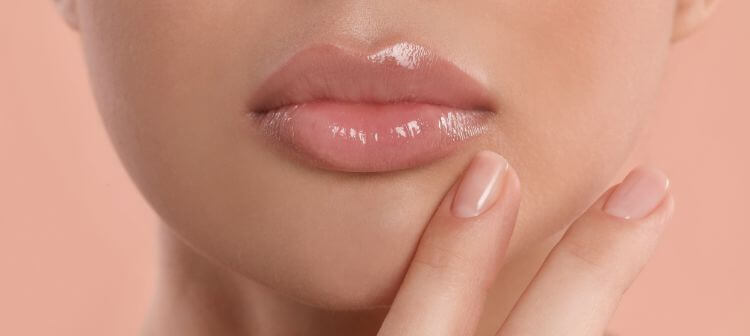Tis the month for romance, so it’s no surprise that interest in lip augmentation with dermal fillers skyrockets in February. However, according to TikTok trends, the hashtag #lipfillermigration tops popular searches.
Social media videos of botched lip filler may be compulsive viewing, but for an in-depth view of why lip filler migrates and how it can be prevented, read on.
Lip augmentation is the most popular cosmetic procedure in the UK for women of any age. Changing beauty perceptions mean younger patients are keen to increase volume and enhance the lip shape in line with the images they see on social media. Older patients often wish to address thinning lips and other ageing changes to the mouth area.
When performed by a skilled and experienced aesthetic practitioner, lip augmentation with dermal fillers can significantly boost self-confidence. However, poor injection technique can lead to lip filler migration.
What is lip filler migration?
The most popular lip fillers contain hyaluronic acid, a naturally occurring substance in the body that retains moisture and holds up to 1,000 times its own weight. In the lips, this keeps them plump and full. Hyaluronic acid dermal fillers can increase volume, eliminate fine lines on the upper lip, and strengthen the corners of the mouth that start to turn downwards over time.
There is minimal downtime, and results are instantaneous and typically last between six months to a year in the mouth area.
Although lip fillers are minimally invasive, several potential side effects exist. These include bleeding at the injection sites, bruising, infection, and formation of lumps or asymmetry. The most severe complication is tissue death, known as a vascular compromise, which occurs if the dermal filler is injected near or into a blood vessel in the lips. Another common concern is migrated lip filler, where it spreads from the initial injection site.
What causes lip filler migration?
The most popular dermal fillers are composed of synthetic hyaluronic acid. Within each brand, there are typically different products of differing gel-like consistency depending on the area of the face to be treated. The mid-face requires a thicker consistency to restore significant lost volume, whereas the delicate lip area needs a thinner consistency. Most products also contain lidocaine gel which improves the patient experience by reducing any sensitivity.
The injected filler will usually remain within the vermillion border of the lips, but if it does migrate, it will usually move into the cutaneous portion of the upper lip. This can result in a ledge-like effect, creating a shadow that is sometimes called a ‘filler moustache’. From the side profile, it can look duck-like. Another presentation is the formation of lumps in the lip line.
The rise in popularity of over-exaggerated pouts and trends such as the ‘Russian lip’ has led to an increase in issues with lip filler migration. These techniques typically involve multiple punctures of the lip border, making it more likely that filler can leak out.
Why does filler migrate above the lip?
Migrating filler can occur for a few different reasons. The most common cause is the filler being injected into the wrong place. It may also be as a result of an inexperienced practitioner performing the procedure, or the wrong type of filler being used.
How can you prevent lip filler from migrating?
There are certain steps you can take to prevent lip filler migration above the lip:
- Ensure that an appropriate amount of lip filler is used: a skilled practitioner can control precisely how much dermal filler is injected and where it is placed to avoid overfilling. The best approach is slow and steady, so it is important to wait until your filler has settled down and take a gradual layering approach.
- Only use trusted dermal filler brands: at Karidis Clinic, we only use the leading brands that have undergone intense clinical testing, have been used effectively for many years and are proven to have strong safety records.
- Follow our aftercare advice: we will give you comprehensive guidelines on looking after your lip filler treatment and minimising downtime. These include not exposing the area to intense heat such as saunas; avoiding pressure on the treatment area for the first few days; avoiding strenuous exercise and alcohol consumption for 24 hours; and not having any skin treatments such as laser, IPL, peels or microdermabrasion for two weeks after your lip augmentation.
- Choosing a reputable practitioner: this is the most critical factor as a skilled aesthetic practitioner is more likely to produce the result you want and minimise any potential complications. They will also be able to manage any issues that occur such as lip filler migration.
What should you do if your lip filler has migrated?
Hyaluronic acid dermal filler popularity is mainly because these products are temporary. Results last up to 12 months, but they are also reversible if you’re unhappy with the outcome. Hyaluronidase is an enzyme that breaks down HA and can be used to dissolve lip filler.
The Karidis Clinic ethos is to produce subtle results that enhance your natural beauty, and we only use the most trusted, gold-standard brands to deliver this outcome for our patients. For more information, call us on 0207 432 8727 to speak to one of our injectors.
















